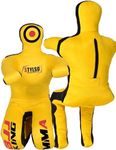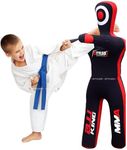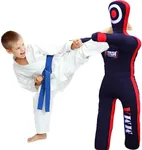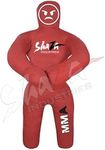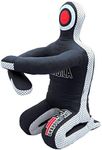Buying Guide for the Best Wrestling Dummy For Kids
Choosing the right wrestling dummy for kids involves understanding the key features that will ensure safety, durability, and effectiveness in training. Wrestling dummies are essential tools for practicing techniques, improving strength, and building confidence. Here’s a guide to help you navigate through the important specifications and make the best choice for your child.Size and WeightSize and weight are crucial because they need to match the child's age, size, and strength. A dummy that is too heavy or large can be difficult to maneuver and may lead to injury. Generally, dummies for younger kids (ages 5-8) should weigh around 20-30 pounds, while older kids (ages 9-12) can handle dummies weighing 40-50 pounds. Choose a dummy that your child can lift and move comfortably to ensure effective practice and safety.
MaterialThe material of the wrestling dummy affects its durability and feel. Common materials include vinyl, canvas, and leather. Vinyl is durable and easy to clean, making it a good choice for younger kids who might be rough on their equipment. Canvas is also durable but can be a bit rougher on the skin. Leather is the most durable and provides a realistic feel but is usually more expensive. Consider how often the dummy will be used and the level of comfort your child needs when choosing the material.
Flexibility and Joint ArticulationFlexibility and joint articulation refer to how well the dummy can mimic human movements. Some dummies have articulated joints that allow for more realistic practice of holds and submissions. For beginners, a less flexible dummy might be sufficient, but as your child advances, a more articulated dummy can help them practice more complex techniques. Assess your child's current skill level and training goals to determine the right level of flexibility.
Shape and DesignThe shape and design of the dummy should resemble a human body to provide realistic training. Some dummies are designed to sit upright, while others are more flexible and can be positioned in various ways. For younger kids, a simpler design might be easier to handle, while older or more advanced kids might benefit from a dummy that can be positioned in multiple ways to practice different techniques. Consider what types of moves your child will be practicing most often.
Safety FeaturesSafety features are important to prevent injuries during practice. Look for dummies with reinforced stitching, padded surfaces, and no sharp edges. The dummy should be sturdy enough to withstand repeated use without breaking down. Ensure that the dummy is well-constructed and that all parts are securely attached. Prioritize safety to ensure that your child can practice confidently and without risk of injury.
